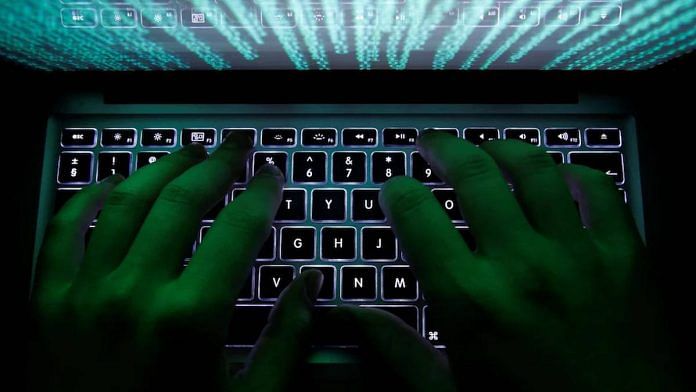New Delhi: Cybercrime in the country has gone up significantly from 2021, clocking an increase of 24.4 percent in 2022, largely for motives such as fraud, extortion and sexual exploitation, data released by the National Crime Records Bureau (NCRB) Sunday has revealed.
The crime rate in the country has also gone north, from 3.9 percent in 2021 to 4.8 percent in 2022. Telangana topped the crime rate — that is, cases relative to every one lakh people — with 40.3, followed by Karnataka with 18.6 and Andaman 7.
Under the category of cybercrime, of the total cases reported in 2022, 64.8 percent, or 42,710 cases, were with the motive to defraud, 3,648 cases (5.5 percent) for extortion, and 3,434 cases (5.2 percent) for sexual exploitation.
Another 10,791 cases were listed under the “other” motives in the NCRB data.
Incidentally, a safe cyberspace is a top priority for the BJP-led central government, with Home Minister Amit Shah often highlighting the major security risk such offences pose globally. The ministry has kept up efforts for a “cyber safe India”.
Revenge, fraud & sexual exploitation
Under the motive of fraud, Karnataka topped the list with 11,025 cases reported in 2022, followed by 10,991 in Telangana and 5,515 in Maharashtra. Fraud, in fact, was the reason behind 87.8 percent of total cybercrime cases registered in Karnataka.
Uttar Pradesh topped in extortion with 5,515 cases, which amounted to 54.5 percent of its total cases, followed by Assam with 628 and Telangana with 447.
Cybercrimes with the motive of “sexual exploitation” were highest in Maharashtra with 447 cases, followed by Uttar Pradesh with 542 and Karnataka with 338 cases.
UP also topped the list for the motive “causing disrepute” with 883 cases, followed by Gujarat with 371 and Madhya Pradesh with 251.
“Personal revenge” was also the motive for cyber fraud, the NCRB data showed, with a total of 857 cases registered across India in 2022. Assam topped this list, followed by Bihar and Andhra Pradesh.
Low chargesheet rate & challenges
The total chargesheet rate in cybercrimes across India, however, is only 29.6 with Delhi logging the highest rate at 89.3.
The chargesheet rate is dependent on cybercrimes being cracked by investigating agencies, who have often highlighted low cooperation from social media platforms and tech companies as a major hurdle.
For example, actor Rashmika Mandanna’s deepfake case is yet to be solved by the Delhi Police. It has hit a roadblock since concerned companies, US-based Meta and GoDaddy, have not yet shared details on the user who created the AI-manipulated video, police sources said.
While addressing the G20 Virtual Summit in November, Prime Minister Narendra Modi had highlighted the adverse effects of Artificial Intelligence (AI), particularly deepfake technology.
Speaking to ThePrint, a senior Mumbai Police officer said, “It is a long and tedious process to get data related to cybercrimes from social media platforms. Indian investigating agencies have to mostly backtrack and trace the origin of such cybercrimes in order to crack them… But in some cases, after the news breaks, most accused (original creators) delete their accounts and then we have to write to Meta and other big players and wait for their response.”
Another senior Mumbai officer, however, saw a silver lining behind the increase in cybercrimes in India. “That means more and more people are reporting such cases. There is increased awareness”.
The last couple of years have seen several cases of cybercrimes such as financial frauds, online stalking, bullying, releasing of private and intimate videos and photos and outraging the modesty of women. To name a few — the Bulli Bai, Sulli Deals, and Clubhouse cases.
Moreover, there have also been online bomb threats in Delhi and Bengaluru.
To check cybercrime, police forces such as those in Mumbai and Delhi have often turned to social media to increase awareness.
“Tackling the menace of cybercrimes whether fraud, sexual exploitation or extortion is dependent on multiple factors like how soon has the crime been reported. However, in most cases, it takes time to trace the IP address. Many others use VPN, which again is a big roadblock,” a senior Assam police officer said.
Also read:



